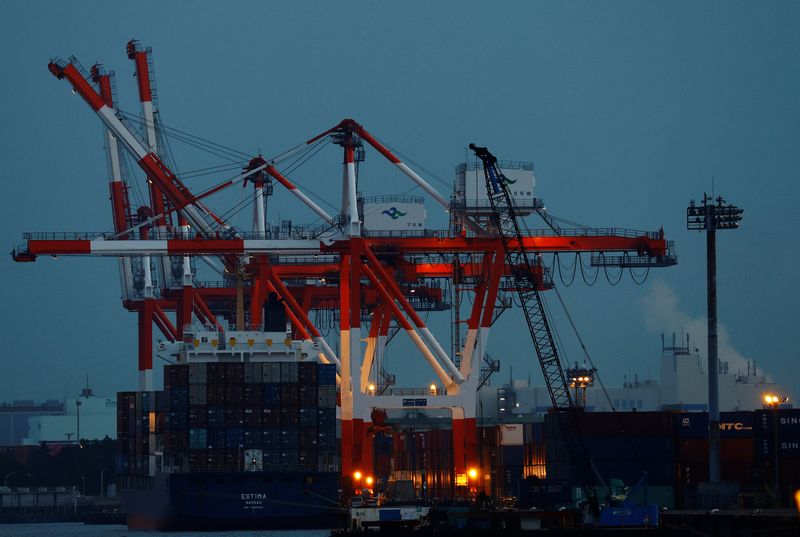By Tetsushi Kajimoto and Kantaro Komiya
TOKYO (Reuters) -Japan's economy grew much faster than expected in April-June, as brisk auto exports and tourist arrivals helped offset the drag from a slowing post-COVID consumer recovery, although global recession prospects cloud the outlook.
The 6.0% annualised growth in Japan's economy translated into a quarterly gain of 1.5%, much bigger than median estimates of 0.8% in a Reuters poll and bringing gross domestic product (GDP) to a record high.
It was the fastest expansion since the final quarter of 2020 and followed a revised 3.7% expansion in January-March.
While the headline GDP data provides some relief to policymakers seeking to balance economic growth with sustainable inflation, it masks underlying weakness in the household sector.
Marcel Thieliant, head of Asia-Pacific at Capital Economics, said the export-driven momentum in growth is unlikely to be sustained.
"And while capital goods exports bounced back in June as the largest falls in overseas investment are now behind us, we do not expect a vigorous recovery," Thieliant said.
Private consumption, which makes up more than half of the economy, fell 0.5% quarter-on-quarter in the April-June period, as price hikes hit sales of food and household appliances.
Exports expanded 3.2% in the second quarter led by car exports and inbound tourism, while capital expenditure was flat.
Japanese automakers have benefited from a weaker yen, which has helped prop up profits amid declining sales in China and an increasingly tough shift to electric vehicles.
Strong U.S. and European demand has also supported exports while the post-COVID boom in foreign tourists has given the economy a much-needed tailwind.
That boost in external demand, or net exports, added 1.8 percentage points to second quarter growth. However, that net contribution was also flattered by a decline in imports for a third straight quarter, which have struggled due to yen weakness.
Meanwhile, domestic demand shaved 0.3 of a percentage point off growth.
"The biggest factor was a decline in imports that pushed up GDP. It doesn't mean a strong recovery in Japanese economy," said Takumi Tsunoda, senior economist at Shinkin Central Bank Research Institute.
"As such, the central bank will maintain the current monetary policy and adopt wait-and-see stance for the time being."
Real wages turned positive for the first time in seven quarters and corporate appetite for investment was solid, Economy Minister Shigeyuki Goto said.
"Against this backdrop, we expect moderate economic recovery to continue although caution is needed on downside risks from global economy and effects of price hikes," Goto said.
The Bank of Japan took steps last month to allow long-term interest rates to rise more, a move seen by analysts as the beginning of a gradual shift away from massive monetary stimulus.
